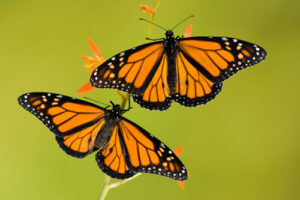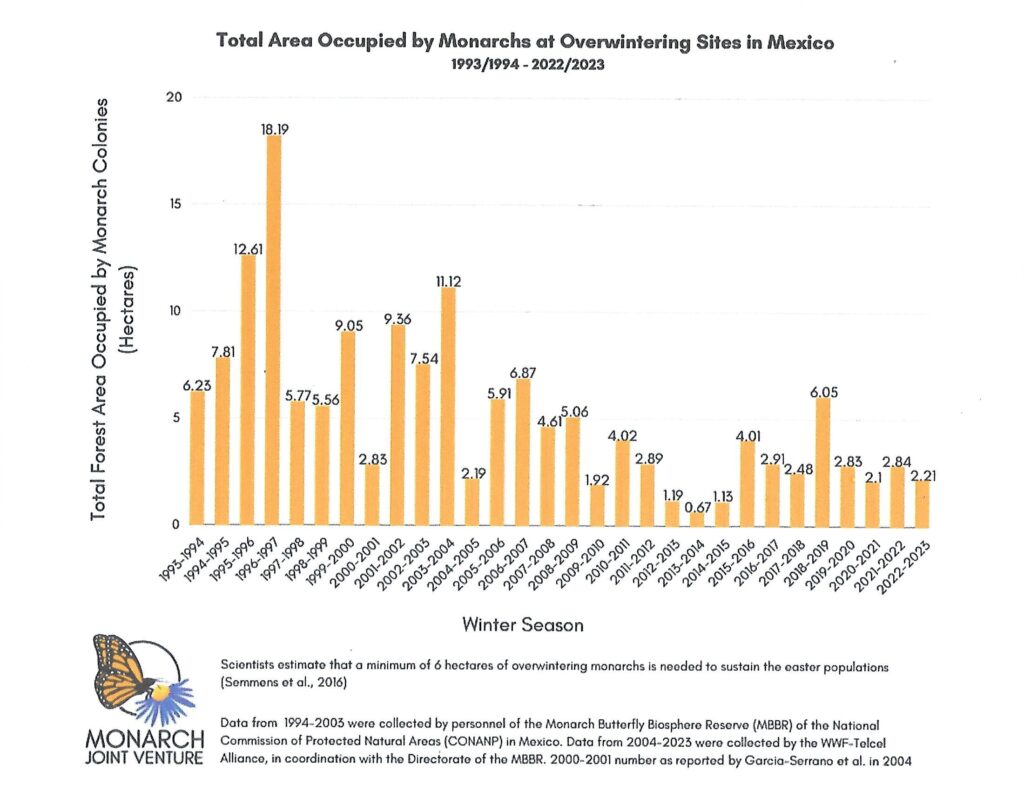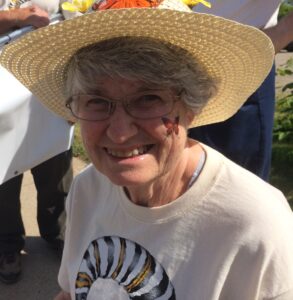Are You Wild for Monarch Butterflies?

If you want to help monarch butterflies continue their wonderful annual migration and life cycle, then Wild Ones has a committee that both provides you with an opportunity and needs your help.
A partnership between Wild Ones, Monarch Joint Venture, and Monarch Watch, the Wild for Monarchs Committee assists monarch butterflies through promoting the planting of nectar and host plants. The committee provides presentations on monarch biology and migration, provides monarch information booths at local events, assists individuals and organizations in establishing native plant areas which include milkweed, and assists in registering these areas as Monarch Watch Waystations.
The committee also collects milkweed seeds and prepares seed packets for distribution at presentations and events. These activities are promoted through press releases and articles in Seedlings, on the Wild Ones webpage, and in other publications.
To volunteer or for more information, contact the Committee Chairs, Carol and Mike Klug at [email protected].

How Can You Help?

- Make a financial donation to support purchase of plug trays, growing media, or plants. Any amount welcome! You can do this through a donation to Kalamazoo Area Wild Ones (KAWO) with a notation for the Monarch Committee in the memo line
- Grow milkweed plants to share with family and friends and to give away at events like plant exchanges. Seeds are available at the KAWO Wednesday monthly meetings or contact Mike and Carol Klug ([email protected])
GROWING MILKWEED FROM SEED
Most milkweed species seed require stratification in order to germinate. Stratification is big word to describe the need for seed to go through a cold moist treatment. In many areas this can be accomplished by letting Mother Nature do this by planting seed outdoors in the early spring or late fall and letting the cold moist soil conditions stratify the seed. This can also be accomplished indoors by placing seed in moist (not wet) clean sand and placing the seed sand mixture in a plastic bag and putting it in the refrigerator. You can also place the seed between moist layers of paper towels or coffee filters and placing them in a plastic bag and into the refrigerator. Most milkweed require a thirty (30) day stratification period. We have found an improved germination percentage by soaking stratified seed in water for twelve (12) prior to planting in soil indoors or outdoors. Seeds should be planted one quarter (1/4) inch deep in potting soil indoors or a well-prepared seed bed outdoors. Additional information on Planting and Growing Milkweed can be found at: https://monarchjointventure.org/get-involved/create-habitat-for-monarchs

- Plant milkweed in your yard and register it as a Monarch Watch Waystation—if you haven’t, this would be a great time. Seeds and information available at KAWO meetings, or on the Monarch Watch website
- Join the Monarch Committee or express an interest in being contacted for tasks; please let Mike and Carol Klug know ([email protected]). Sometime this winter we’ll need help transplanting seedlings from seed flats to plug flats (an excellent opportunity to see how native plants are grown in a greenhouse setting);
- Motivate non-members to plant milkweed on their properties, or share how-to ideas. If you belong to a group looking for programs, request a presentation from Mike or Carol. A pre-recorded presentation by Ilse Gebhard, the Regional Monarch Specialist, is also available at this link.
Monarch metamophosis from caterpillar to butterfly (3 min)
Follow us through our newsletter and on social media
Support Kalamazoo Area Wild Ones
